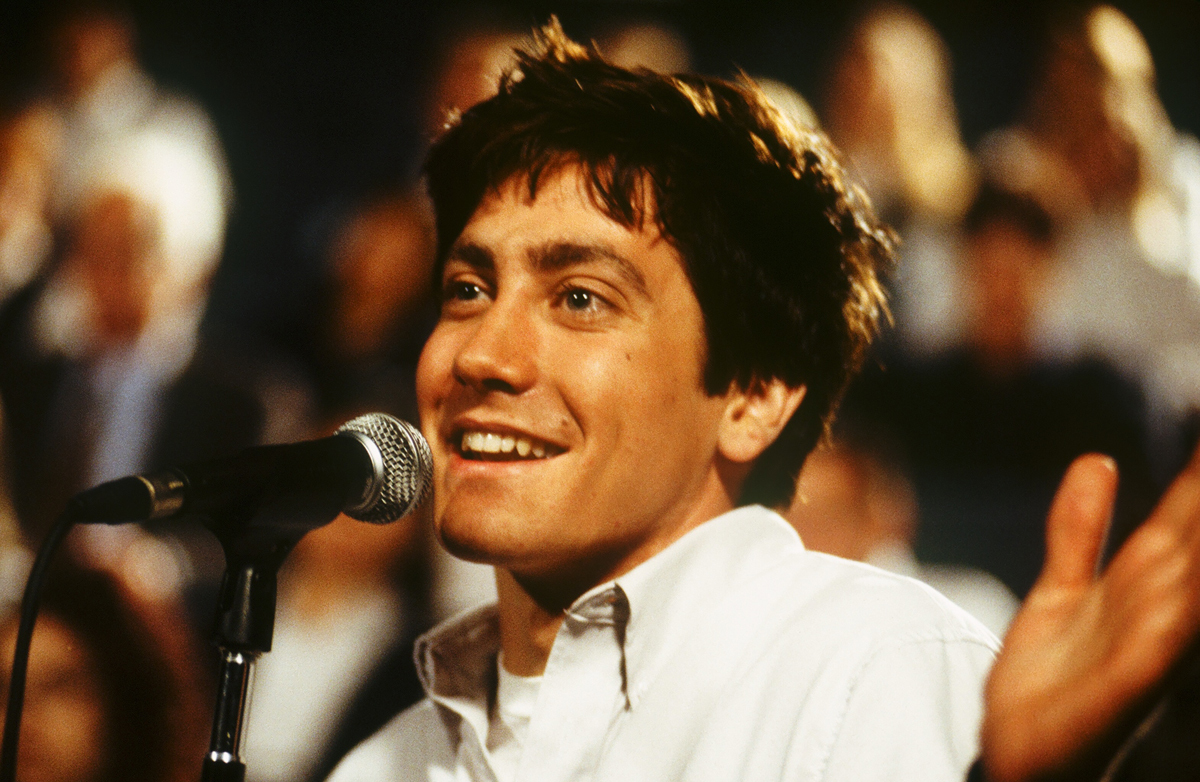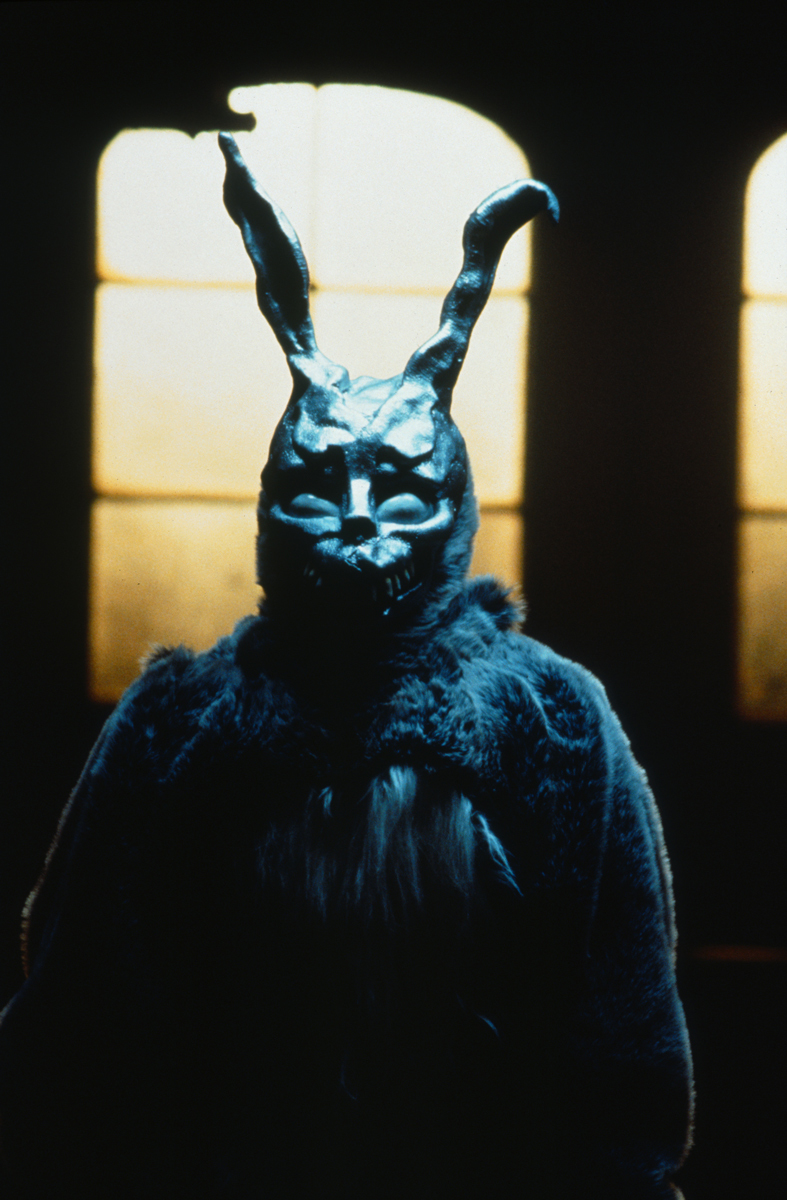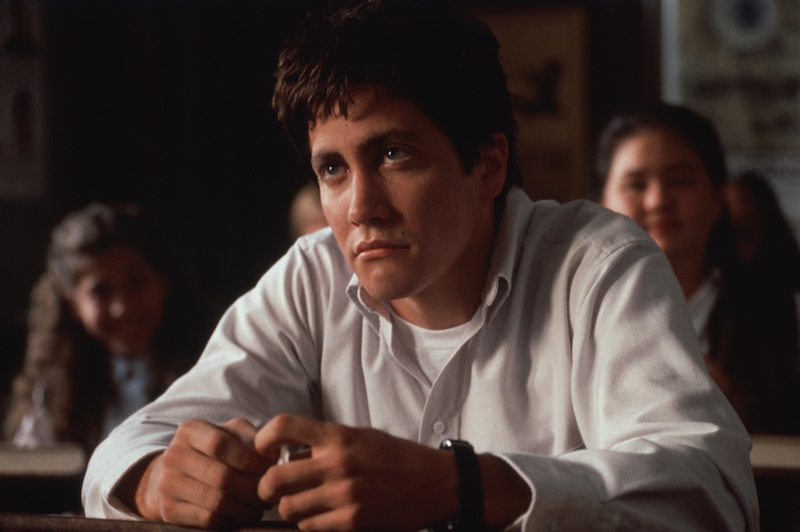Richard Kelly could be forgiven for thinking that he’s currently experiencing a time-space wormhole of the kind made famous in his debut feature, Donnie Darko. Fifteen years after the film’s release, the movie has been given a 4K restoration and a cinema re-release. “People still want to talk about it, so I’m here,” says Kelly, 41, who made the film when he was just 23. “I’m grateful that people are still interested.”
A flop on its initial release, Donnie Darko finally took hold through a combination of its then-weirdly-recent 80s nostalgia, teen goth iconography, British new wave soundtrack, and very trippy Spielberg-meets-King storyline of time travel and adolescent angst. Today, its own influence is very markedly felt on the biggest TV show of the year, Stranger Things. But it has also changed pop music (introducing the “sad cover” phenomenon), given us the lasting gift of Jake Gyllenhaal, and made Halloween costumes cool — providing a choice of Donnie’s skeleton outfit or full-on Frank the rabbit. Below, Donnie Darko‘s creator discusses this legacy.
On his influences…
“When I wrote the film it was 23 years of life experience, more than anything [that influenced it]. Collectively, there was the significant influence of many filmmakers all throughout my adolescence. The high school filmmakers when I was still in high school: Steven Spielberg, Robert Zemeckis, and James Cameron. When I got to college, my world opened up and I got to discover a very broad spectrum of filmmakers going back to the beginning of cinema. I got to watch all the silent films, through 100 years of cinema. The influences are all over.”
On how the UK helped make Donnie a success…
“The UK helped the film become a hit. It was not successful at first in the US, it was not well received at Sundance. It was not well received by distributors, barely got into theaters and was released in the shadow of 9/11. It was in the UK that it was released and celebrated finally. That didn’t happen for a year. It had more time to marinate. The US DVD came out and people in the UK were watching it. It might have had something to do with the music which for the most part was British post-pop new wave from the 80s. That maybe connected with people here. Maybe [British people] are just smarter? [Laughs.]”

On “Mad World”…
“I was very hands on with every detail of the film. A lot of the songs were written into the script, maybe three or four. I was very aggressively involved in all aspects. We were scrambling to finish the film for Sundance. Michael Andrews, our composer, was childhood friends with [musician] Gary Jules and he told us that Gary did this ballad version of “Mad World,” the Tears for Fears song. Gary came up the next day and we recorded in six hours. It happened really fast. We put it in the movie. But it wasn’t until the UK that that song became a phenomenon. The Christmas number one, right?”
On setting the film in the 80s…
“We made an 80s period piece in the year 2000. So, 12 years on. That would be like making a film today about 2004, which is crazy to think about. When we made Donnie Darko, the 80s wasn’t that far behind us. No one was making 80s period pieces in the year 2000 but we did. A lot of people from the financial side thought we were wasting resources by doing it in 1988, told us just set it in 2000. I said that it had to be 88. I saw it as a very specific time. My movies take place in very specific times. The date, the month, the year are always very identifiable in my movies. For this movie, it’s Halloween 1988, right before the election, Bush vs. Dukakis.”

On the film’s restoration…
“This restoration is something we really wanted to do. The film has never looked the way it needed to and we finally were able to restore the image to what it needed to be. It was never transferred properly. The movie was shot on film; the image quality is there. The theatrical prints were beautiful. When it was transferred to the home video realm it wasn’t transferred properly. The skin tones were murky, everything looked too red. We were able to go back, find the original negative, scan it in 4K and meticulously go in and make it look better than ever before.”
On fan theories…
“I try not to go down the internet rabbit hole on anything too much because I don’t think that’s too healthy. The internet can consume us all. I let other people come up with their theories and that’s fine. I’m focused on my work and writing and preparing new films. Trying to move things forward.”

Credits
Text Colin Crummy
